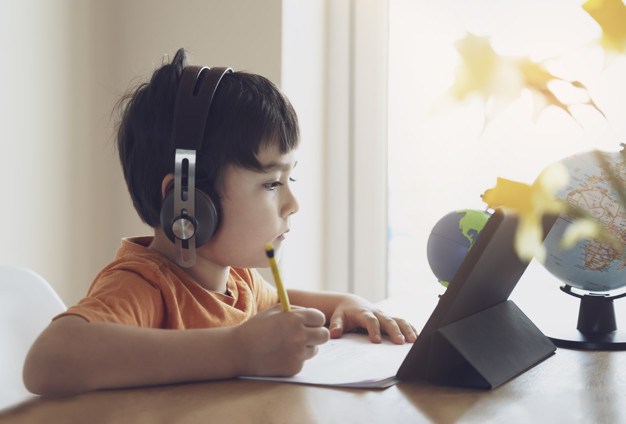
How to Keep Your Kids Engaged During This Time of Distance Learning
(Image credit: Freepiks)
As a result of continued Covid-19 restrictions, more learning institutions have fully embraced remote learning to ensure that every learner does not miss classes, and kindergartens haven’t been left behind in this digital migration. With the shift from one-on-one learning to remote learning, the hardest task is getting your kids motivated to study.
Whether online or traditional classroom, young children understand the concepts better when they are fully involved during the lessons. And because remotely learning is a new model of instruction to many young children, you should adopt teaching methods that help each kid to participate. Here are a few things you can do:
1. Ensure the Learning Environment is Conducive
The physical environment is one of the determinants of children’s engagement in school work. Due to their limited mental abilities, young learners fail to concentrate on school activities when they are put in an environment that does not portray classroom characteristics. This means that the remote learning classroom should have some charts, tables, and learning materials.
A conducive learning environment also means a less distractive classroom. In most homes, screens and cell phones are the primary sources of distraction, which inhibit kid’s ability to complete their schoolwork. To ensure a successful distance learning experience, switch off TV and cell phones before the classes kick-off or conduct your lessons far away from the noise.
2. Choose Activities That Works Better for Your Kids
Kids love to engage in certain types of learning activities over others. For example, more preschoolers become excited when they are involved in drawing and painting. If you notice that your kids like to draw or paint, focusing more on art classes can help them make the most of remote learning experiences.
It doesn’t matter the activity your child prefers, but you can ensure learners acquire different skills as they do what they love to do. For example, when kids are painting and drawing, they not only build their fine motor skills but they learn about shapes, sizes, spatial relationships, and other mathematical concepts.
3. Implement Mid-Lesson and Brain Breaks
The objective of every lesson is to help kids grasp skills in a simple and enjoyable way. As a teacher, it’s your job to make sure learners not only understand the concepts but enjoys the activities, too. However, certain activities are too challenging and can make children feel frustrated. In this situation, it’s important to stop the lesson and give children a break.
One of the reasons why kids need break times in between the activities is that their concentration span is always short. For young learners, frequent breaks mean more than helping kids comprehend the lesson. Recent educational research shows that giving kids break helps to reduce disruptive behaviors, reduces stress among the learners, and improves on-task behavior.
4. Use Rewards to Boost Engagement
Just like older pupils and high school students, kids become motivated when they notice good performance is rewarded. With remote learning where kids don’t have peers to compete with, rewarding them after completing some moderate task is one of the best ways to boost their engagement.
You don’t have to use expensive gifts to award their best performance. Instead of buying them presents, you can promise them something such as their favorite retreat. The idea here is to make kids eager to learn or accomplish a certain goal.
With remote learning being new to most of the kindergarteners, teachers and parents need to work together to ensure that each child enjoys learning behind the bars. While some kids may take a little time to adjust to this new mode of instruction, you are responsible to help them achieve the objective of every lesson.
Are there some tips I haven’t included in this article? Please let me know :). You can also share your thoughts, suggestions, and ideas in the comment box below?



